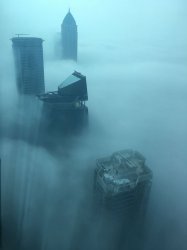The Australian National Audit Office reported that OneSKY won’t even get near the 2021 completion target — full operational capability is tentatively put down for 2025, but even that remains in doubt because that contract with Thales was not signed in October 2015. In fact, it still has not been signed, though Airservices says it will be by the end of next month.
“The offer and negotiation process has been protracted, in part due to misalignment of customer approval processes through two separate governance structures, but also due to Thales not yet producing an acceptable offer that represents value for money for Defence and Airservices,” ANAO says. It notes that there is no way Defence will get what it wants out of OneSKY on its current budget, and it would need “a significant real cost increase” bailout from the federal government.
A big part of the problem, ANAO found, was that what Airservices and Defence were attempting had never been tried before, anywhere. “The joint civil-military acquisition originally intended to procure a largely commercial off-the-shelf (or military off-the-shelf) system; however, the only compliant and viable solutions tendered all required significant development and integration effort to deliver the specified capability.
“Furthermore, there are no similar civil-military air traffic management systems fielded elsewhere in the world.”















